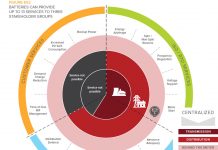John Petersen
The greatest truth in micro-cap corporate finance is that small companies have a lot in common with small children in third world countries – they rarely die of starvation but they frequently die of dysentery. In hard times, small companies that need additional capital can usually find the cash if their management has enough humility to accept the price the new financiers are willing to pay. The problems can quickly become life threatening, however, if management fails to adjust spending to accommodate business conditions or rejects available financing because the terms seem predatory. My advice to clients has always been “take the money when it’s available, even if you don’t like the terms, because shareholders adjust quickly to sensible decisions but they rarely forgive failure.”
Last December a former client Axion Power International (AXPW.OB) found itself with a Hobson’s choice because it needed substantial financing to pursue its development plans and the price the new financiers were willing to pay was painfully low. Management made the right decision and sold 45.8 million common shares at $0.57 per share, which was a big discount from the prevailing market price of $1.58 per share, but worked out to roughly 5.7x the company’s adjusted pre-financing book value of $0.10 per share.
Earlier this week, ZBB Energy (ZBB) filed an SEC registration statement for an offering of up to $10 million in common stock. Concurrently, it added going concern language to the footnotes in its quarterly financial statements. The market’s reaction was violent and shares that closed at $0.80 on March 31st closed at $0.28 yesterday, or 1.27x its book value of $0.22 per share. There’s no way to predict what ZBB’s offering price will be, or for that matter whether the offering will be successful in a tough market, but given the very small spread between the current price of ZBB’s stock and its book value per share, I tend to think the market reaction was overblown and ZBB’s shares are attractive at current prices in spite of the uncertainties. In any event I have to admire a management team that’s willing to bite the bullet and take appropriate steps to insure their company’s survival.
While Axion and ZBB each followed a rational path and got punished by the market for a good business decision, all the companies in my “cool emerging” category have comparable if not greater problems that seem to be complicated in some cases by an unwillingness to bite the bullet on financing terms or slash spending to accomodate current realities. The following table provides summary information on the six companies in my “cheap emerging” and “cool emerging” categories in ascending order of unsatisfied funding needs for the balance of 2010. Comments on each company follow the table.

Axion has enough cash and working capital to support up to three years of operations at historic levels. Now it’s all up to the PbC battery. If ongoing testing by first-tier European and American automakers leads to significant purchase orders, Axion will be able to begin plant expansion with existing capital and, if necessary, go back to the market with a proven value proposition and a solid book of business. If it encounters delays or disappointments, there will be enough cash to weather the storm and solve the problems without going to the market in a position of weakness. Either way the stockholders win because there is no reasonable prospect of dilutive financing for the foreseeable future. Cash is a great thing and I’m delighted that management made the right decision even if the market reacted badly.
Altair Nanotechnologies (ALTI) has a reasonable market capitalization ratio of roughly 2x book value and modest capital spending plans for this year that will be contingent on increases in customer demand for its products. Altair believes its working capital together with revenue from product sales will be sufficient to support its operations for approximately six months. Consequently, Altair will seek stockholder authorization for a reverse split at its annual meeting next week and plans to raise an undisclosed amount of new capital during 2010. There’s no way to predict what the terms of a future Altair offering will be, or for that matter whether the offering will be successful in a tough market, but given the reasonable spread between the current price of Altair’s stock and its book value per share, I tend to think Altair’s shares are attractive at current prices in spite of the uncertainties. Altair’s planned financing and reverse split may prove to be unpopular with some stockholders, but they seem likely to insure the company’s survival and that’s ultimately the only thing that matters.
Beacon Power (BCON) has a reasonable market capitalization ratio of roughly 1.8x tangible book value and more rigid capital spending plans that represent its share of PP&E spending that is not provided by DOE loan facilities. Beacon believes it will need to raise $18 – $20 million in 2010 to continue the orderly implementation of its business plan and will seek stockholder authorization for a reverse split at its annual meeting in July. There’s no way to predict what the terms of a future Beacon offering will be, or for that matter whether the offering will be successful in a tough market, but given the very small spread between the current price of Beacon’s stock and its book value per share, I tend to think Beacon’s shares are attractive at current prices in spite of the uncertainties. Beacon’s planned financing and reverse split may prove to be unpopular with some stockholders, but they seem likely to insure the company’s survival and that’s ultimately the only thing that matters.
Valence Technology (VLNC) has always baffled me because I can’t understand how a company that’s under water to the tune of $75 million maintains a $120 million market capitalization. As near as I can tell Valence owes its survival to loans from a principal stockholder and occasional open market sales of its common stock. In a case like Valence, all I can do is paraphrase the late Billy Holliday, “papa may have, and mama may have, but god bless the company that got its own.”
Ener1 (HEV) has consistently carried a market capitalization that’s way out of line with its tangible book value. It also has a very high burn rate and aggressive capital spending plans that will require huge amounts of new financing in the immediate future. Ener1’s most pressing problem is a $15 million note to Credit Suisse that matures in late June, but its capital spending plans are critical to an ARRA battery manufacturing grant the DOE awarded in August of last year. Ener1 plans to finance its operations and capital spending from open market stock sales and other sources. While Ener1 believes it has access to sufficient capital to continue its planned operations, I’m left with the nagging question “at what price?” In connection with its IPO, A123 Systems (AONE) sold stock for 5.75x its pre-offering tangible book value before. Unless Ener1 can convince investors that it’s a better company than A123, I have a hard time imagining a substantial equity offering priced above $1.50 to $2.00 per share.
As a
younger man I spent some time in the oil business and learned you don’t start drilling a well without enough cash to reach your target depth, complete a successful well, build pipeline and storage facilities and provide for reasonably anticipated contingencies. That’s a tall order in corporate finance where the cost of reaching the next milestone is always uncertain. A123 raised enough cash in its IPO to build a U.S. plant and begin production. As painful as its December financing was, Axion has at least a couple years of running room. All of the other emerging companies on my tracking lists will have to endure some pain over the next few months as they seek new capital in a tough market. Those that make solid decisions will emerge stronger for it. Those that don’t will fail.
Disclosure: Author is a former director of Axion Power International (AXPW.OB) and holds a substantial long position in its stock.








The bigger question is “just how long can a company keep going that never makes a profit?” Wait! It’s not important! The game is for the officers of the company to sell snake oil until no one will buy anymore. Close up shop and walk away with a huge pot of compensation money. Hell, don’t forget to sell all your insider stock before the price collapses.
A123 is an example of gaming the local/state money and will end badly for everyone but the company execs.
All the battery, solar and EV car companies might as well be selling tulip futures.
I’m not a huge fan of lithium-ion business plans because I’m not confident that a robust market for plug-in vehicles will develop. That being said, A123 has always been up front about the fact that it will take a couple years to build a plant and ramp sales volumes.
The battery business is heavy manufacturing and development can take far more time than we’re used to in IT where Steve Jobs can introduce a product and sell a few million units in the first year. It will require a brand of patience that we’ve not seen in the market for a long time.
Great article John… it left me wanting more. Any chance of a followup looking at some of the other emerging battery cos?
Next week I plan to focus more on the better established public companies in the sector.
http://earth2tech.com/2010/03/15/latest-battery-startup-shutdown-firefly-energy/
Not to say a guy can’t make a buck on alternative energy stocks but be careful.
The rumors I’ve heard are that Firefly had a couple financing offers last year and rejected them because management thought the pricing was predatory. If it was more than rumor, I would have mentioned it in the article as a classic example of why it’s critical to take the money when it’s available.
The only two ways for a small company to sustain ongoing losses are to either have enough money or be able to raise enough money. When option two is difficult, cash in the bank is priceless.